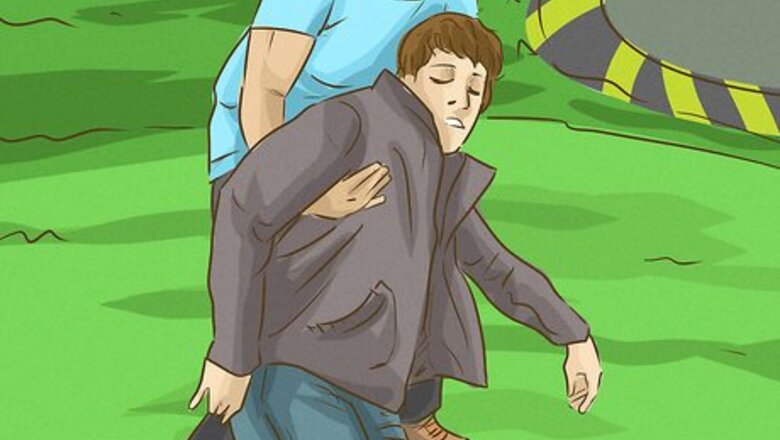
views
Treating a Chemical Burn
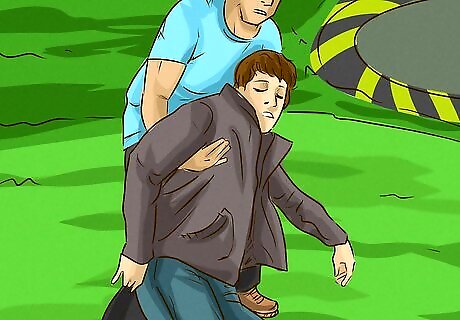
Remove the patient from the area of exposure. If the chemicals still pose a danger to the burn victim, then make sure that you remove him or her from the area of exposure. For example, if the chemicals are giving off fumes or if the victim is in danger of getting splashed with more of the chemical, then remove the victim to another room or go outside. Always take precautions to protect yourself when tending to someone who has received a chemical burn. For example, you may need to wear long sleeves, gloves, a mask, goggles, or other protective gear to prevent yourself from receiving a similar injury. If there are any dry chemicals left on the victim's skin, then brush these chemicals off before irrigating the area.

Take off any clothing or jewelry around the burn. If the victim has clothing, jewelry or other items on that are contaminated with chemicals and/or obstructing your access to the burn, then make sure that you remove these items before you being treatment. Leaving these items on may cause further damage. You will also need to be able to access the burn site to brush off any leftover dry chemicals and irrigate the area with water.
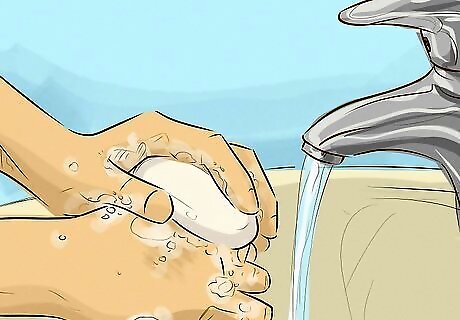
Wash the burn thoroughly. If you receive a burn from a chemical, you should first dilute the chemical compound. This is the best thing you can do to treat a chemical burn right away. To do this, flush the burn and the surrounding areas of skin with copious amounts of water. The water should be cool. Let the water run over the burn for 15 minutes or more. Don't use a high pressure stream of water to wash the skin. Too much water pressure can make the chemical burn worse by driving the chemical deeper into the skin. Just use light irrigation by holding the wound under a gentle stream of water and keep it there for a long time. Some chemical burns should not be treated with immediate irrigation. These include dry lime, elemental metals such as sodium, and phenol. This is because combining these chemicals with water causes a harmful exothermic (heat-producing) reaction and/or releases hazardous byproducts. For chemicals in the eyes, remove contact lenses and use an eyewash. These are found in locations where corrosive chemicals are common, including laboratories and industrial areas. To use one, place the face over the eyewash and turn the water on. The water will spray the face and enter the eyes.
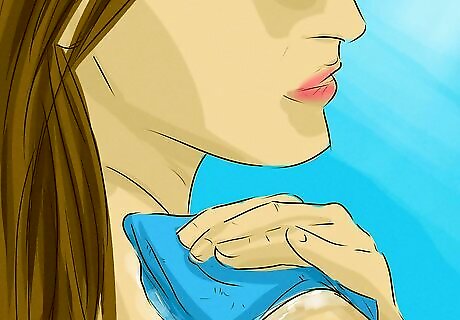
Apply a clean, sterile dressing. After the wound is clean, you may want to cover it with a clean sterile dressing, such as a piece of gauze. This will help to protect the wound. If the wound is painful, then applying a cold compress can also help (e.g. ice). Wet a clean washcloth with cool water and then place it over the wound to help cool and soothe it.
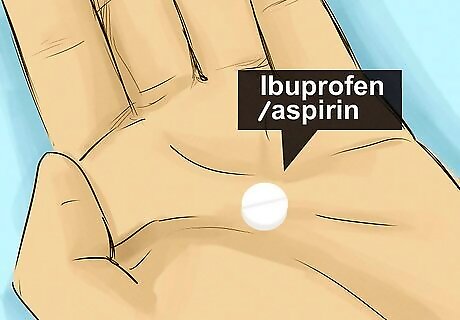
Administer an over-the-counter pain reliever. To alleviate some of the pain, it can help to take an over-the-counter pain reliever, such as acetaminophen or ibuprofen. However, if the pain is severe, then you may need a prescription strength pain reliever. Seek medical attention right away if your burn is causing severe pain.
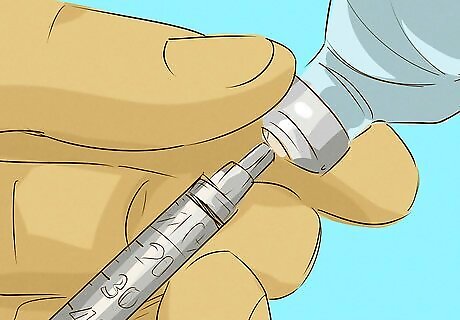
Get a tetanus shot. A tetanus shot or booster is often recommended for burn victims. If the victim’s tetanus shot is not up to date, then he or she will need to have a booster. Tetanus shots are usually administered once every 10 years.
Seeking Medical Attention
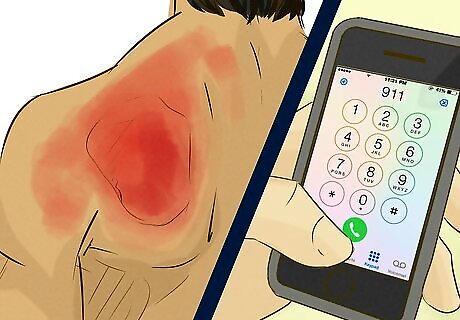
Seek medical attention for severe burns. If you have a chemical burn, then you should seek immediate medical attention. Call emergency services or 911 if the burn victim has any of the following serious symptoms: pale complexion fainting shallow breathing burn that covers a large area of skin, such as 3 inches (8cm) in diameter or more burn that is around the feet, face, eyes, hands, groin, buttocks, or a major joint
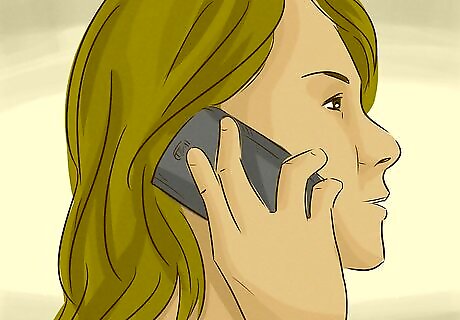
Call the poison control center. You can also call the poison control center in your area if you do not think the burn is severe. If you know what the compound was that burned you, have that information ready. The operator can provide treatment advice that is specific to the chemical that burned you. If you don't know what chemical burned you, you should still call poison control. The operators can ask questions to determine with a reasonable certainty what the chemical might be. If your burn is serious and you are taken to a hospital before you can call the poison control center, you should make sure that you have someone at the hospital call so you can find out how to proceed. The doctor will know the basics of how to treat your burn, but the poison control center can give you a more specific idea. This information is invaluable as some compounds may need to be left open to air while others require an occlusive dressing.
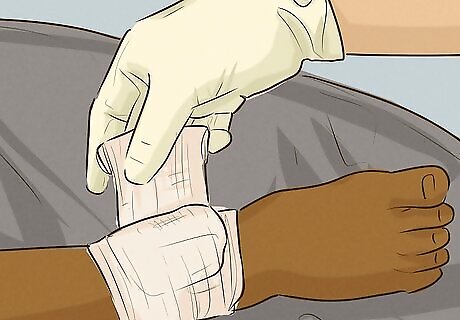
Get treated for an advanced burn. Once you arrive at the hospital, you will receive various treatments, depending on the severity of the burn. If there are any large blisters or any areas that required scrubbing, you will receive some medicine for pain and then they would clean the burn. If there are large blisters, they will perform a controlled rupture to relieve pressure. Any smaller blisters will be left alone. Your wound will then be covered with Silvadene cream using a tongue blade. They will then cover the wound with a 4 x 4 gauze pad, which will be applied over your wound to protect the site or the burn. Another rolled gauze will be wrapped around the wound site.
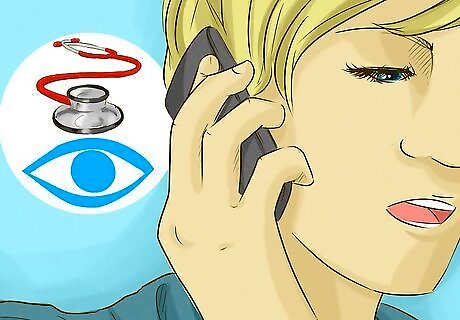
Seek emergency treatment for eye chemical burns. Chemical burns in the eye, also known as ocular chemical burns, are extremely serious and you should call 911 right away. You should also get to the nearest eye wash station as soon as possible and begin washing them out with copious amounts of water for dilution purposes. It will also help prevent irreversible scarring of the cornea and conjunctiva, which can cause possible blindness. Eye chemical burns from acids or alkalis require emergency care and treatment. Otherwise, you risk permanent vision loss. For an ocular burn, you may be sent to an ophthalmologist so they can do a visual acuity test, which is where she will assess the damage to your eyes. Some studies indicated good results with copious irrigation with acidic ocular burns. The use of steroid eye drops, vitamin C eye drops, and antibiotic eye drops were used to help treat the eyes.
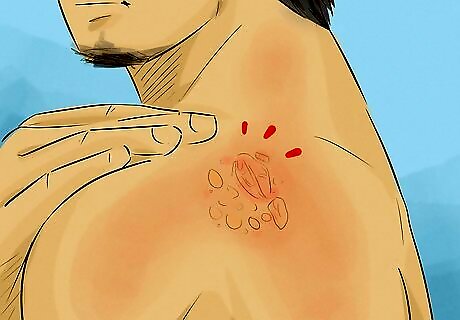
Check on yourself. You should continue to follow the care instructions given to you by the burn center in order to prevent infections or complications. However, they can happen, which means there are things you should look for after you suffer a burn. Watch daily for signs of infection, such as expanding redness, pus, fever, or green drainage. If any of these are present, you must seek emergency medical treatment immediately. Follow up with your primary care provider or a toxicologist if necessary. Some toxic agents can be absorbed through the skin and can cause systemic toxicity. Inhaled vapors can cause both systemic toxicity and lung problems, such as asthma. Some inhaled substances can even be fatal. If you are a diabetic, are on steroids or chemotherapy, or have a weakened immune system for any reason, you are at risk for infection and ought to be especially careful for signs of infection. You should recheck your wound daily as well as wash and change the dressing. Your skin should start to peel and regrow new skin within 10-14 days, depending on the kind of burn.
Learning About Chemical Burn Types
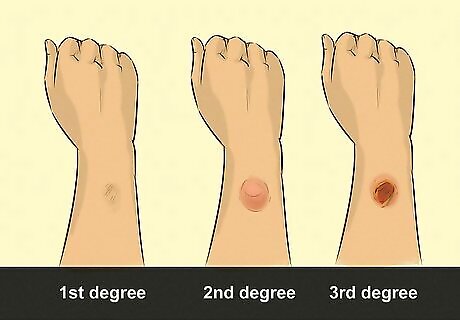
Consider the different types of chemical burns. There are two different types of chemical burns. Some chemical burns are primarily alkali in nature, such as those coming from fertilizer solutions, drain and pipe cleaners, ammonia, and batteries. These are particularly hazardous. Despite the reputation of acids, acidic burns, such as those caused by hydrochloric acid and sulfuric acid, are less toxic.
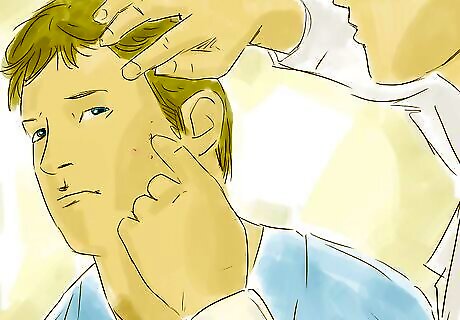
Recognize second degree burns. There are two types of second degree burns. The first is superficial, which is characterized by redness and damage of the entire portion of the upper layer of skin as well as partial damage to the second layer the skin. The burn will blister and you will be in pain, which is a good sign. The superficial burn will be very red and may bleed. These will likely heal without any scar within two weeks. You may also experience a deep second degree burn. With this burn, you destroy even more of the under layer of dermis. It will no longer be red but will appear white, which shows that there has been damage to your blood vessels that is impairing circulation. It will not hurt because the nerves are also damaged so you cannot feel pain. There may or may not be blisters. Healing will occur but it will take longer than two weeks and will likely scar. If you have a deep second degree chemical burn over a joint, the scar could affect your ability to move the extremity it is connected to.
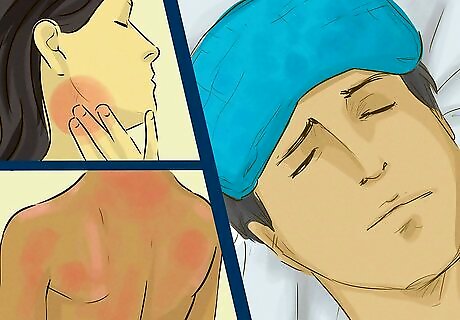
Learn about third degree burns. Third degree burns are the worst and cause the most lasting damage. Burns this deep effect the upper and lower skin layers, just like the other burns, but extend down through to the subcutaneous tissue. Damage to this layer of tissue causes it to look like leather. This burn requires surgical management for healing. You will likely undergo a debridement or have skin grafts.














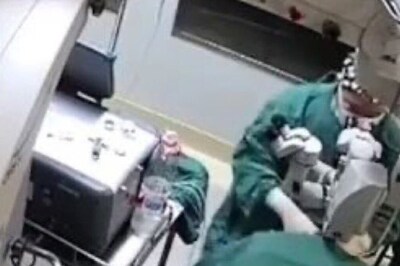


Comments
0 comment